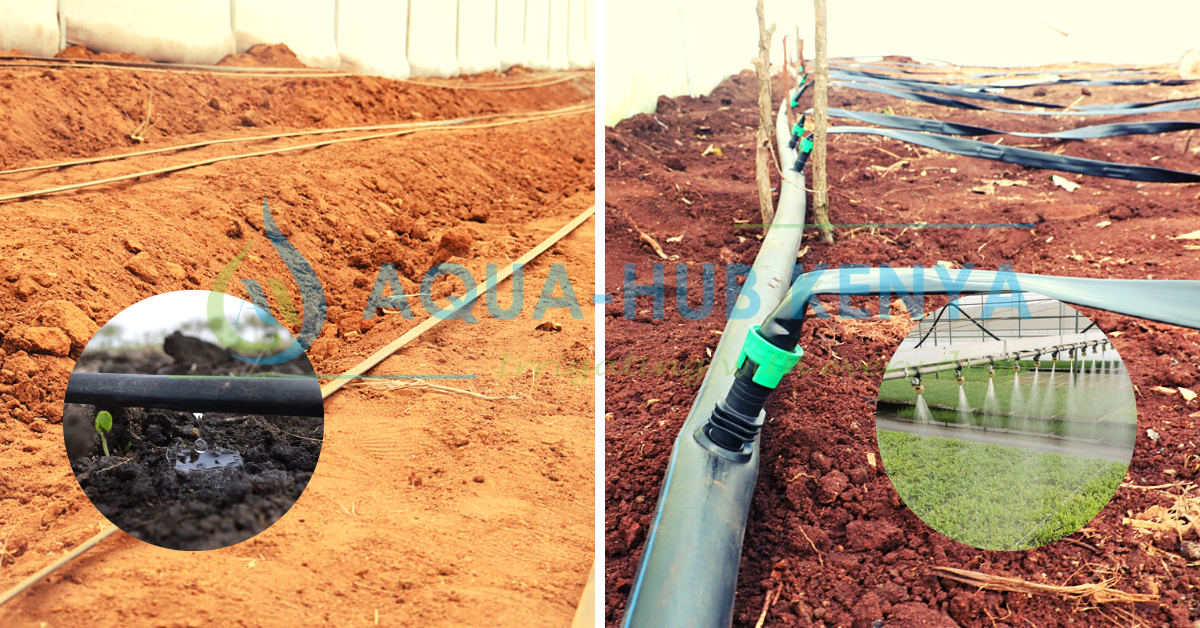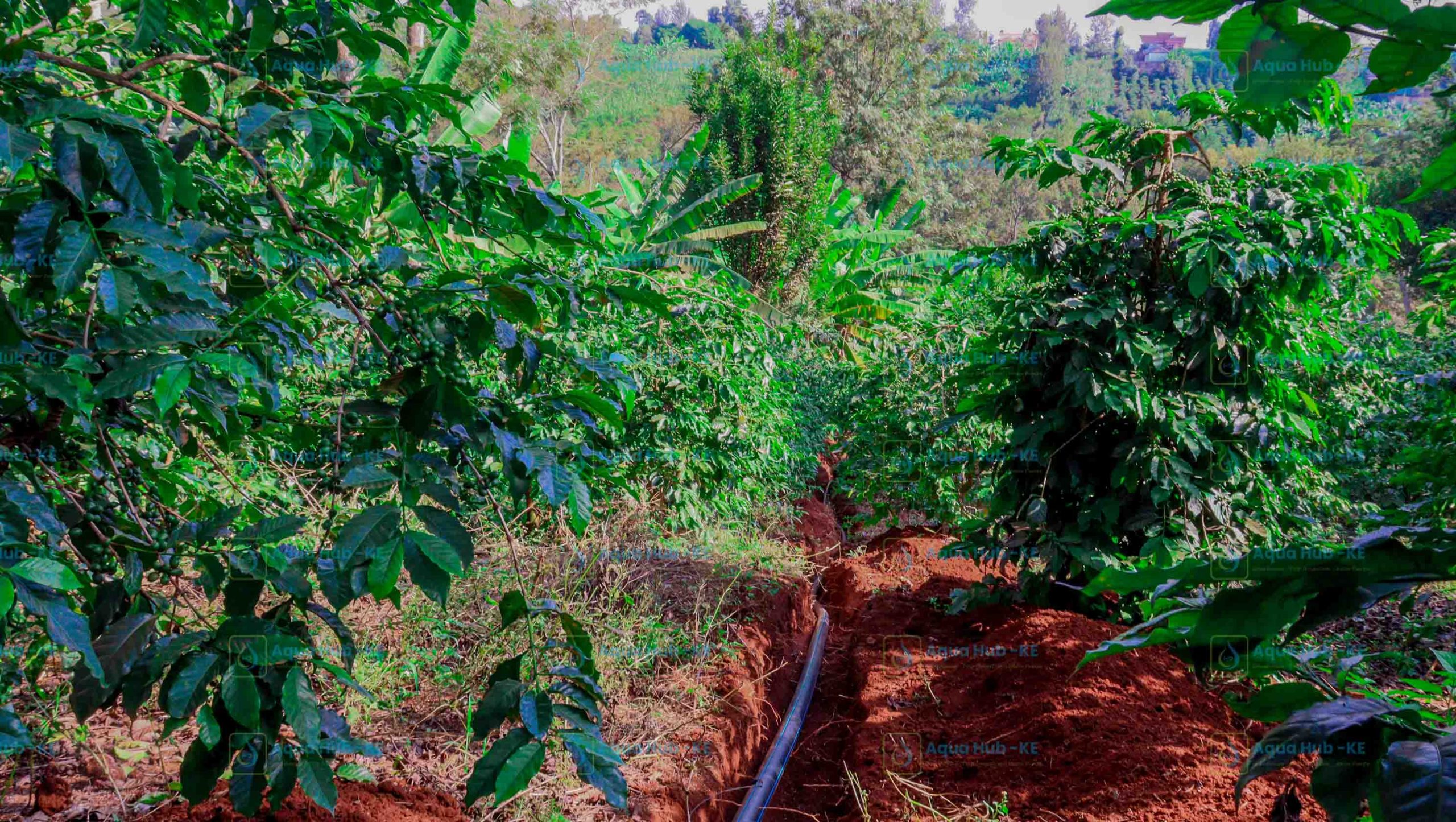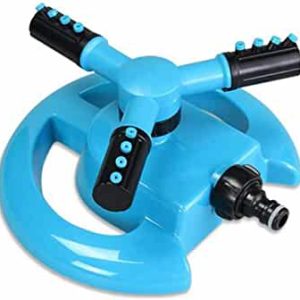When constructing a greenhouse, good greenhouse irrigation systems are recommended. This is because water is a vital component in the success of any greenhouse project. Because soil buffers are limited, greenhouse irrigation and fertigation systems are crucial for crop quality and output. When it comes to the best water irrigation systems for greenhouses, gardeners have a lot of options. Hand watering your potted plants is a relaxing activity that allows you to monitor their growth. But not everyone has the time to visit their greenhouse on a regular basis. Indeed, skilled gardeners will build irrigation systems throughout their greenhouses to ensure that their plants receive appropriate hydration.
What are the best greenhouse irrigation systems?
Depending on the particular requirements of the greenhouse and the plants being cultivated, there are a number of greenhouse irrigation systems that are regarded as the finest. The most well-liked systems include:
Drip irrigation system
One of the most used greenhouse irrigation technologies is drip irrigation. Direct nutrition and water delivery to plant roots are achieved via a system of emitters and tubing. This approach can save a lot of water and work and is quite effective. It has grown to be one of the most widely used commercial greenhouse watering systems. Thin tubes are used to directly provide water to a growing medium in predefined amounts. With the least amount of labour and without affecting other aspects of the greenhouse environment, like humidity, this delivers water where it is most required.
It is excellent for plants that prefer moist soils since it gently disperses water over time, reducing dryness. The benefit of using this watering method is that you can schedule and control the water flow to ensure that your plants receive the ideal amount. To make this system as efficient as possible, the drippers should be placed as close to your plants as you can. It can be installed above or below the soil’s surface.
Sprinkler System
Overhead watering is an excellent time-saving technique if your plant is able to handle having its foliage wet. This is the ideal option if your plant doesn’t mind having damp leaves, despite the fact that many of our plant buddies are susceptible to powdery mildew or leaf spot. Little transplants, for instance, like receiving water from above. The greatest option is above sprinklers, and you can even alter the nozzle’s range depending on where they are located inside. The greenhouse sprinkler system’s adaptability enables a variety of layouts, including spray stakes.
Aqua Hub offers a comprehensive range of irrigation systems and supplies, including dripline adapters, hose couplings, and sprinkler head risers. Additionally, keep an eye on how each sprinkler is working since you don’t want a shortage of moisture to impede the growth of your plants. The method is affordable and easy to use. It is also ideal for plants that must be watered often and may be controlled manually or automatically. Locations with little air moisture are best for this strategy. The risk of water runoff should be highlighted since it makes it undesirable for plants with thick crowns (canopies).
Misting/Fogger Irrigation System
This technology atomizes the water into tiny droplets and disperses them throughout the greenhouse using a high-pressure pump. Misting systems work well to keep the greenhouse’s humidity level constant. For arid areas, plants that demand moisture, or greenhouses where seeds are germinated, misting irrigation systems are suitable. A misting setup uses less water than a small-scale spraying operation. One benefit of using this system rather than a conventional sprayer is that you can pace it and decide whether you want to sprinkle your plants every 15 to 30 minutes or let them run continuously.
The misting system is comparable to the sprinkler system, but it may be used more often and with less water, which leads to improved moisturization. One of the benefits of using this type of irrigation is the potential to reduce greenhouse temperatures, which is especially useful in hotter areas. The method is effective for seed germination and in tropical greenhouses. It is not too expensive and has the capacity to both increase humidity and reduce temperature. Additionally, this method uses precisely the proper amount of water, dispersing it uniformly, and generating an adequate number of water droplets.
Manual irrigation or hand watering
If you’ve recently built up your greenhouse, you’ll undoubtedly need a way to keep the plants’ moisture levels high. Since the simplest strategy is typically the best, you may just take a watering can and get started on your own. Your plants’ roots will appreciate you taking the time and exerting yourself to water them by hand, despite the time and effort involved. It is a fantastic choice if you don’t have a lot of plants or if you have a range of plants that require different degrees of hydration. With this method, you may only water the plants that need it, saving money and providing focused irrigation. It also gives the opportunity to monitor the plants.
What are the factors to consider when choosing greenhouse irrigation systems?
- Plant Type: Different plants have different water and nutrient requirements, so it’s important to choose a system that can meet the specific needs of the plants being grown.
- Greenhouse Size: The size of the greenhouse will determine the number of plants that need to be irrigated, and the size and type of irrigation system required.
- Climate: The local climate will play a role in determining the most appropriate irrigation system. For example, in a dry climate, a drip irrigation system may be more appropriate than a flood irrigation system.
- Water availability: The availability and quality of water will also play a role in determining the most appropriate irrigation system. Some systems are more tolerant to water with highly dissolved salts or suspended particles.
- Budget: The cost of the irrigation system and its maintenance will also be a factor to consider. Some systems may have a higher initial cost but may be more cost-effective in the long run.
- Labour: The labour required for the maintenance of the irrigation system should also be considered. Some systems require more frequent maintenance than others.
- Automation: Automation can be a factor to consider, some systems are more easily automated than others, and automation can save labour and water.
Greenhouse irrigation water management tips
- Use a moisture sensor: A moisture sensor can be used to monitor the moisture level of the soil and automatically adjust the irrigation system
- Use a rainwater harvesting system: Rainwater can be collected and stored for use in irrigation. This can help to reduce the amount of water needed from other sources.
- Utilize greywater: Greywater from sinks, showers, and washing machines can be used for irrigation in a greenhouse. As long as it’s not contaminated with chemicals or other harmful substances.
- Use water-efficient irrigation systems. Drip irrigation and ebb and flow systems are considered to be some of the most water-efficient irrigation methods.
- Maintain irrigation systems: Regular maintenance and cleaning of irrigation systems are good. It can help to ensure that they are functioning properly and not wasting water.
- Use mulch: Using mulch around the plants can help to retain moisture in the soil. And reduce the amount of water needed for irrigation.
- Use water-efficient plants: Some plants are more drought-tolerant than others. So consider using plants that require less water in the greenhouse.
- Monitor and record: Keep track of water usage, monitor the plants and record their water needs. This will help to understand the water needs of the plants and make adjustments to the irrigation system accordingly.
Generally, greenhouse irrigation is extremely important for maintaining the well-being and production of plants cultivated in a greenhouse. Contact Aqua Hub Kenya Limited’s offices in Nairobi and Eldoret for information about irrigation for greenhouses. For all of your agricultural inputs and management strategies, we are a trusted partner. For additional information, call 0790719020.




